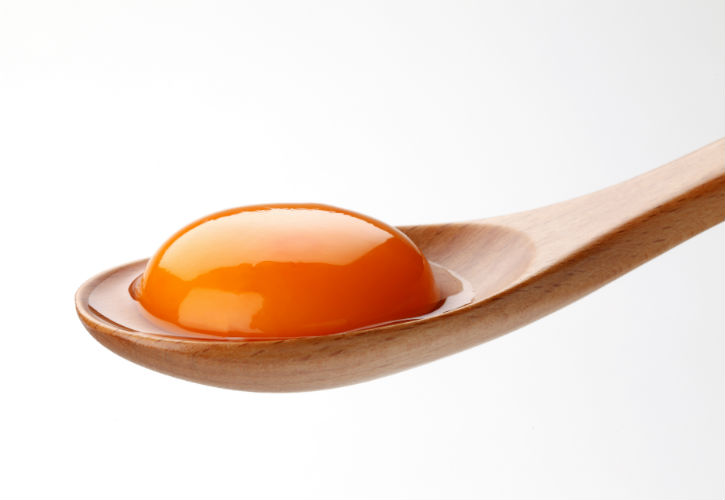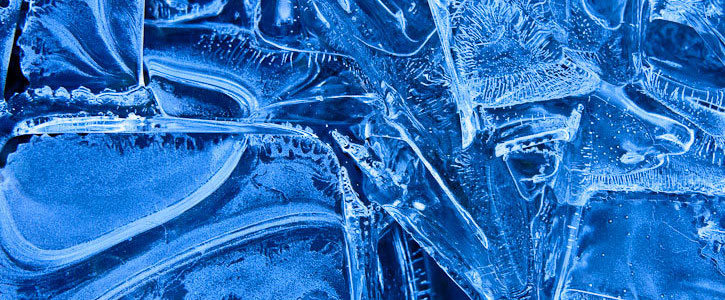Ice Cream Science
Even before molecular gastronomy became a popular culinary method, we were using the concepts to make the perfect, creamy ice cream. If we were to simply combine the ice cream ingredients and put them in the freezer, we would end up with a hard block similar to an ice cube. Ice cream is both an emulsion and a foam.
It first becomes an emulsion when milk and cream are distributed in water and ice with an emulsifier or stabilizer. Then, a foam is formed as a result of air in the ice cream not mixing with the other substances but instead forming small bubbles. There are several methods of making ice cream, and they all include some kind of movement that incorporate air into the ice cream mixture. In these next two lessons we will take a look at the science behind making the perfect ice cream.

Let’s start with basic components of ice cream. There are 6: ice, water, sugar, fat, solids and air.
Ice
Ice crystals to be exact. Obviously, ice is involved when making a frozen dessert, but it’s how the ice is formed that turns ice into ice cream. The ice crystals that form in the ice cream will vary in size depending on how the ice cream is made; the smaller the formed ice crystals, the creamier the ice cream. The size of the ice crystals also determine the perceived temperature of the ice cream as it becomes in contact with the tongue. Grainy ice cream with larger ice crystals will feel colder than a smooth creamy ice cream with smaller crystals. This is simply because of the higher heat that needs to diffuse from your tongue to the larger ice crystals to melt them. The higher heat loss makes your tongue feel colder.

Water
When making ice cream, there is a portion of the water (usually originating from the milk) that doesn't form ice crystals and remains unfrozen thanks to the dissolved sugar in the ice cream base.
Sugar
The sweetness is added to the ice cream in the form of honey, syrups, and sugars. While the milk or cream is usually fairly sweet itself, the sugars or sweeteners add more flavor as well as serve to lower the freezing point of the cream. This ensures the ice cream will never freeze solid, even after churned. Corn syrup is often used instead of regular sugar (sucrose) to obtain a chewy and less sweet ice cream.
Fat
Fat is added to ice cream in the form of milk fat and emulsifiers, like egg yolks. It helps stabilize the ice cream base and thicken the ice cream, as well as add richness and flavor. In ice cream you would normally find milk fat globules in liquid and semi-crystalline form.
Solids
Solids are mostly the non-fat milk solids, like protein, and rock minerals. It can also include the yummy additions added to ice cream, like chocolate chips, nuts, caramel, marshmallows, etc. These items are called free roaming solids, meaning the roam freely within the ice cream during the churning process. This addition of solids actually helps the ice cream form a creamier texture by reducing the occurrence of large ice crystals.
The liquid water, milk fat globules, milk proteins and sugar are referred as concentrated sweetened cream by Harold McGee.
Air
Air is perhaps the most important ingredient to a high quality ice cream. It’s the silent partner to a creamy, delicious treat. Air is incorporated into the ice cream mixture in various ways, depending on the churning method. Air is added or whipped into the ice cream during the churning process, and is almost solely responsibility for the density and texture. The more air added, the lighter and less creamy the ice cream will be. Many ice cream makers will add more air to their ice cream when making a “diet” version since 1 scoop could actually equal 2-3 scoops of ice cream with less air. This is called over-run, the dense, creamier ice creams are low over-run, and the lighter, fluffier ice creams are called high over-run.
What holds the air in place and makes the foam stable? It is the semi-crystalline globules of milk fat that make the foam stable and hold the air bubbles in place. The concentrated sweetened cream coats the ice crystals and sticks them to each other. When the mix is churning, the semi-crystalline globules of milk fat connect to each other forming long strands that hold the air bubbles in place, making the foam stable.
Other Important Components of Ice Cream
Emulsifiers
Egg yolks are often used as an ice cream emulsifier. Emulsifiers add creaminess and weight to ice cream. Visit our Emulsion Class to learn more about emulsifiers like eggs, butter, and more. They are a protein and are used in custard style ice cream to make it creamier and thicker. The egg yolk coagulates when heated and creates a thick gel that traps water.
Stabilizers
Ingredients like gelatin, agar agar, guar gum, xanthan gum and corn starch are examples of ingredients used to stabilize ice cream and sorbets. These ingredients improve the texture and structure of the ice cream. They also help reduce melt time by acting as a sponge to absorb and immobilize the liquid. Stabilizers are used to reduce ice crystals and increase the creamy mouthfeel of your ice cream, gelato or sorbet. Finally, stabilizers help maintain the creaminess of your ice cream during freeze-thaw cycles. Click here to buy one of our two fantastic stabilizer blends.





